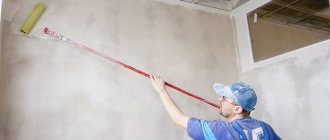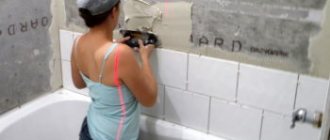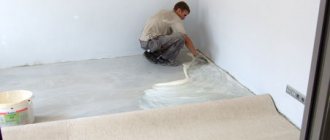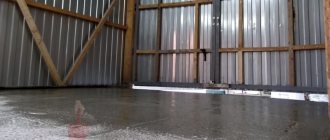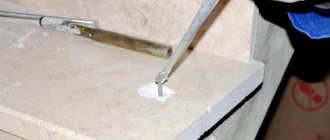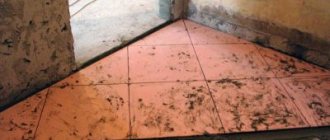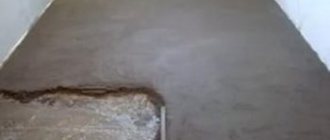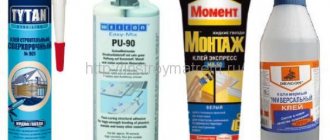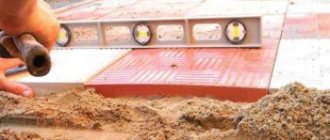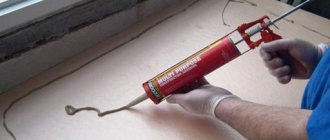Varieties
quick-drying glue instantly glues wood surfaces together
There are several types of adhesive mixtures, which differ depending on the purpose. Each of them has high drying strength. A certain type of adhesive is selected, as a rule, based on its composition. There are:
- Water-based glue (animal, PVA). The product reliably fixes fabric surfaces, foam rubber, and types of non-woven fiber.
PVA glue is perfect for gluing foam rubber
When working with this type of material, you cannot use any other type of adhesive other than PVA. Not only can they be ineffective, but they can also damage the surface. For example, liquid super glue instantly corrodes the fabric base.
- A universal option is PVA, hot glue. If the correct gluing technology is followed, it ensures long-term fixation strength.
- Wood glue for furniture (resortive). The base contains aliphatic resins. Used for gluing wooden surfaces, including outdoor furniture.
- Contact furniture adhesive (based on synthetic rubber, hot melt adhesive, high-strength PVA). Used for repair and restoration work on home and outdoor furniture. It sets quickly, but the item can be used for its intended purpose after a day.
uniform application of glue on the PVC sheet
Based on the principle of hardening, all furniture adhesives are divided into groups:
- quick-drying (drying) - just leave the glued elements in the air (PVA), they will firmly stick to each other;
- thermoplastic (hot melt adhesive) - available in the form of cartridges, granules, blocks, rods; activation of the fixing properties requires exposure to temperature (the composition passes from a solid to a liquid);
- thermosetting (BF) - an adhesive seam is formed when the composition hardens under the influence of elevated temperatures.
The last group of furniture adhesives is divided into:
- one-component – sold ready-made;
- multi-component - as a rule, mixed immediately before application.
thermoplastic glue
Based on the origin of the main ingredient, there are:
- organic;
- organoelement;
- inorganic adhesive mixture.
Depending on the form of release, the following types of adhesive compositions are presented on the building materials market:
- liquid;
- dry;
- solid.
Furniture glue containing a solvent (cyclohexane, acetone, hydrocarbon compounds, etc.) quickly hardens due to the evaporation of volatile substances. Water-based products take longer to bond.
Polymer-based materials
Polymer assembly adhesives are made on the basis of synthetic resins: epoxy, acrylic, or furan. The scope of application and technology of application of the material depend on the type of resin. To harden the base, combined hardeners are introduced into its composition. The technical characteristics of the adhesive are improved with the help of additional additives.
Epoxide
Epoxy adhesive consists of a resin and a hardener. To increase strength, metal filings, cement, soot, and glass fibers are also added to it. The finished mixture can be applied to concrete surfaces even at subzero temperatures.
The following construction and finishing works are carried out using epoxy glue:
- bonding surfaces (FBS, aerated concrete blocks, finishing tiles on the base);
- bonding concrete to other surfaces (foam, metal, wood, etc.);
- waterproofing and disinfection of concrete;
- impregnation of worn surfaces to increase their strength.
Due to its high viscosity and low technological viability, epoxy is not recommended for monolithic bonding or joining old and new products.
Acrylic
Acrylic glue is a cheap technological material with high ductility and strength. It is used for gluing concrete installations at different times. The finished mixture is applied to the hardened layer before pouring a fresh solution for subsequent monolithic coating of the canvas.
The advantages of acrylic include:
- environmental friendliness;
- high adhesion;
- water resistance.
Despite their versatility, acrylic compounds are rarely used for laying FBS blocks, fastening aerated concrete and shaped parts.
Furil
Furyl glue is a universal substance for construction and finishing work. Due to their increased adhesion, furan resins firmly bond even heavy grades of concrete.
To improve the technical characteristics of the material, fiberglass, quartz, graphite or asbestos are introduced into its composition. The finished mixture has high chemical resistance and is used in the following cases:
- impregnation of underground communications to prevent corrosion;
- waterproofing of concrete surfaces;
- bonding concrete to concrete and other heavy surfaces (metal, stone, brick).
Unlike epoxy, furyl glue is applied only by hot method in 2 layers.
Properties
to tightly bond the surfaces of the beams, clamp them with a clamp
To ensure maximum strength and reliability of connections, the adhesive joint must be made with a product with an optimal composition. Ingredients should be selected taking into account the following parameters:
- resistance to temperature load (use of objects outdoors in the open sun, near heating appliances, gas, electric stoves);
- strength under weight load (seats of sofas, chairs, table legs, shelves in closets, other elements that can withstand the weight of objects);
- vibration resistance – furniture located in close proximity to washing machines, generators, and other work equipment;
- resistance to chemical attack - refers to those elements that are supposed to be washed frequently with household chemicals (kitchen, bath, toilet).
Technical parameters of thermoplastic furniture adhesives:
- melting temperature value is within 80-100 o C;
- the working temperature of hot melt adhesive is 120-200 o C;
- hardening period - from 5 to 40 seconds depending on the composition.
Hot melt adhesive does not contain active (volatile) solvents. To firmly fix the surfaces, they must be pressed against each other and held for some time (until the adhesive seam initially hardens). Reliability of gluing is ensured by the resins, rosin, and synthetic rubber included in the composition. Some options contain a small amount of highly volatile solvents, which reduces the setting time of the mixture.
liquid glue in tubes for gluing fiberboard surfaces
Durable versions of water-based adhesives sometimes require placing the treated surfaces under a press. This ensures better bonding of the layers and increases the reliability of the adhesive seam.
The quality of gluing depends not only on the properties of the adhesive composition, but also on the correct preparation of the surface.
For example, porous materials such as plywood, wood, chipboard must be pre-dried and cleaned. A high percentage of moisture can increase the setting period of furniture glue and reduce the strength of the adhesive seam.
What are we going to glue it with?
The final result of the work radically depends not only on careful preparation of the surface, but also on the quality of the chosen adhesive. Ceramic tiles are a fairly heavy material, so only specialized tools will help to adhere them fundamentally.
Glue Knauf-Flexkleber
This is exactly what Knauf-Flexkleber adhesive is, which is positioned by the manufacturer as a universal elastic product used to lay tiles on deformable and springy substrates, in particular chipboard. The glue is quite economical and easy to use; it is a dry mixture based on cement, which is mixed with water immediately before use.
When diluted, it retains its properties for about 3 hours, and within 10 minutes it allows you to adjust the position of the tile, which is very convenient if it does not have to be laid by a professional. For greater reliability, when facing chipboard, it is advisable to apply the adhesive not only to the base, but also to the underside of the tile, using a spatula with large teeth. There is no need to wet the tiles with water before work.
If you prefer to lay tiles using ready-made adhesive, then turn your attention to Lugato “Drauf Sitzt”.
Lugato “Drauf Sitzt”
The white creamy dispersion mass is ready for use, has a high adhesive force and ensures zero slipping of tiles even of quite large sizes (300x200 mm), which is especially important if laying is carried out vertically. Due to the fact that the glue does not require dilution, its composition and consistency are always unchanged, which is difficult to achieve by mixing the components yourself. It is especially convenient to use such a ready-made composition if the amount of work is not large.
The same universal liquid nails enjoy a good reputation, and it is best to apply the composition not pointwise, but in a zigzag, “snake” pattern, to ensure a sufficiently large area of contact between the materials. The glue dries completely in 12-24 hours, depending on the air temperature maintained in the room.
By following these tips, you will be able to reliably glue the tiles even on such an inappropriate base as chipboards. You can watch the process itself in the video below:
Application
Furniture adhesive must be selected not only taking into account the type of material being glued, the load applied, and external conditions. Don't forget about ease of application.
applying glue to plywood boards
- Hot melt adhesive will provide fixation of furniture edges (PVC, melamine, etc.). It is applied using a gun, inside of which the adhesive composition melts to a liquid state.
- Animal glue, which is unfairly considered an outdated option, can be used when gluing plywood. The inconvenience of use is that the granules must be dissolved in water at high temperature (in a glue boiler). The resulting seam can be melted down and the plywood can be re-attached with it many years later.
- Contact types of adhesives for furniture on a polymer (rubber, butadylene-styrene) basis are the best option for restoration work with upholstery, joints of fabric bases, wood, leather, and plastic parts. The adhesive seam is quite elastic and resistant to temperature and humidity.
- A subtype of contact furniture adhesives is acrylic, which contains latex. The environmental friendliness and high strength characteristics of this product allow it to be used for working with children's furniture made of wood, plastic, chipboard, and other materials.
- PVA furniture adhesive (Lux type) is intended for gluing particle boards, veneer, pressed cardboard, laminate, plywood, and wood. Forms a durable film of increased elasticity.
- Epoxy (two-component) is a universal option for fixing any surface. It can be used to fill cracks and gaps.
- Rubber furniture adhesive (grade 4010) is the best option for attaching metal, wood, fabric, rubberized fragments to a base. It has increased elasticity and resistance to external influences.
- BF (phenolic butyral), Rapid 100 are used for fixing the foam layer to the surface.
With the development of the chemical industry, the range and variety of adhesive mixtures increases. At the same time, the quality of popular and widely used furniture adhesives used for restoration and repair is improving.
When choosing furniture glue, you should pay attention to the expiration date
CMC wallpaper glue
Today, carboxymethylcellulose, or CMC, adhesives are still among the oldest but most reliable wallpaper adhesives. The reason for this popularity lies in the fact that carboxymethylcellulose does not have a coagulation temperature. This means that when dissolved in high-temperature water, it does not produce precipitation and does not form into lumps. In other words, you can prepare glue on this basis using water at almost any temperature. It is quite difficult to understand the wide range of CMC adhesives available on the market, because their range is constantly changing and expanding. In this regard, there is a danger of stumbling upon low-quality goods from unscrupulous manufacturers and suppliers. To avoid this as much as possible, we bring to your attention a few simple rules that you should always adhere to.
The most important point is the appearance of the CMC glue; it should be a white powder. In this case, it will never fail and will perform its function perfectly; it will dissolve in water in a matter of minutes and will not form any lumps.
If you find some yellow shavings instead of white powder in the box, then you can say with confidence that you have turned your attention to low-quality products. Such a mixture is most dangerous for wallpaper made from paper, because the resulting glue from such shavings easily seeps through the paper web and subsequently spoils the entire appearance with this yellowness. Plus, it is difficult to dissolve in water. We categorically do not advise you to use domestic glue for imported wallpaper, since the consequences of such a tandem can be sad: there have been negative experiences when the wallpaper even changed color, thereby spoiling the overall color scheme. Such miscalculations can be easily avoided if you purchase glue from popular and proven brands, such as, for example, Quelyd (France), Dufa Tapetenkleister (Germany), TD 2000 (UK), Papa (Germany). The ideal option is to use the same brand of glue as the wallpaper.
Carboxymethylcellulose-based adhesives differ from others not only in quality, but also in purpose. There is wallpaper adhesive of varying degrees of severity, namely: light, medium and heavy. What is the difference? The answer is simple - the concentration of carboxymethylcellulose, which at high levels gives the glue greater viscosity. This feature is very important for working with heavy wallpaper, because simple glue, which has a low degree of viscosity, will not be able to grip with the required force, and the consequences of such wallpapering of walls are quite clear. Remember the following rule: the thicker the wallpaper, the thicker the glue used to work with it.
Particular attention should be paid to rooms with high air humidity. To prevent the inevitable decay process in this case, you should use CMC glue, which contains special antiseptic substances.
The next type of wallpaper adhesive is vinyl glue. It is simply designed for gluing vinyl, fabric, foam and embossed wallpaper. It is worth noting the easy process of working with it. Wallpaper with vinyl adhesive applied to it glides perfectly over the surface, which means that it is very easy to level and join. If necessary, if the glue has not yet dried, the wallpaper can be separated from the surface and re-glued without reapplying glue.
As for the technology for dissolving dry wallpaper adhesives, there is no difference. Water at a temperature of 25 degrees is poured into a prepared plastic bucket or enamel basin (whichever is convenient for you). Take a stick and create a kind of whirlpool, into the middle of which the dry mixture is poured with constant stirring. To ensure that the glue is completely ready for use, it is enough to let it sit for either three minutes or several hours. Cooking time can be found on the packaging.
There are several methods for applying glue to the surface. You can spread it directly onto the canvas and glue it right there. This method is used, as a rule, when working with light paper wallpaper. Another way is to apply glue to the surface, wait a while for it to be absorbed into the base, and then apply another layer. In order not to rack your brains about which method is better and more practical, carefully read the instructions for use, which are mandatory on all packages.
Next, let's talk about dispersion glue. It is indispensable when working with velor, vinyl, textile wallpaper, as well as glass wallpaper. What is its fundamental difference from other types of wallpaper adhesives? We answer: it stands out from the background of simple adhesives due to its increased strength, and if at some point you want to tear off the wallpaper glued to this adhesive from the wall, then you will have to make an effort. In addition to strength, it has one more advantage, namely: this type of glue is moisture resistant, which means it can withstand high air humidity. However, there is a recommendation not to use it in the bathroom.
Unlike simple dry wallpaper glue, dispersion glue comes to store shelves in finished form. It can be applied not to wallpaper, but to the prepared surface to be finished. The drying time for this glue is approximately 12 hours.
Liquid Nails
This name should not be taken literally, because it is unlikely to be possible to imagine such a thing. In fact, this combination means an adhesive based on an aqueous dispersion of acrylic copolymers. It was created specifically for easy and quick installation without the use of nails. What is the scope of application of liquid nails? It turns out that they can be used to glue finishing materials made from various materials: wood, fiberboard, chipboard, plasterboard, cardboard, cork, etc. Ceramics and metal are also on the list. In general, it turns out that this glue is a universal glue, the purpose of which is to glue various types of finishing materials to all kinds of surfaces and glue them together.
Liquid nails must be applied to a clean, dry surface, always degreased. But it should not be applied in a continuous layer, but in dots (in the case of a light material) or in waves (if the material is heavy). The drying period of this glue varies from 12 to 24 hours and directly depends on the thickness of the applied layer, room humidity and temperature.
Latex based adhesive
This type of glue is characterized by its versatility and scope of application, which includes almost all types of interior finishing work. It is used in working with parquet, linoleum, ceramic and tiled tiles. In general, it’s easier to list where it won’t help. As for the application method, there are no difficulties, so we follow the proven scheme: we clean the desired surface from dirt, degrease it and apply a thin layer of glue. After that, we attach the material we want to the glue. From half an hour to an hour is the setting time for latex-based glue.
What is used to glue ceramic tiles?
If you want to glue ceramic tiles yourself, it’s not a difficult task, especially with our recommendations. So, ceramic tiles can be glued to the surface using the simplest cement mortar, or a cement-based adhesive mortar, or a special kind of mastic. If we take into account the cost of materials, then you will pay much less money for cement-based glue than for mastic. Hence the explanation for its popularity. The scope of application of this type of glue is as follows: you can attach not only ceramic and tiles, but also tiles made of artificial and natural stone. Moreover, the size of the finishing material can be large and even have a strongly pronounced relief surface on the reverse side.
First of all, a thin layer of glue is applied to the surface prepared in advance and it is leveled. Then they put another layer on which the finishing material (in our case, tiles) will adhere. Such a layer cake is necessary in order to obtain the greatest adhesion of the glue to the surface. The glue drying time is 24 hours, and after 48 hours it will reach its maximum strength.
Mastic based on sodium silicate is applied to the surface in a slightly different way. A smooth surface is covered with one thin layer of this mastic, approximately 0.5-1 mm. In case of an uneven surface, the mastic is applied in a layer to level the surface. After this manipulation we lay the tiles. The hardening time of this material takes about three hours. We can talk about final drying only after five to six days.
It also happens that during repair and construction work it is necessary to glue wood together. In this case, you should pay attention to PVA glue - glue based on an aqueous dispersion of polyvinyl acetate. It is so good that it will glue any tree almost tightly. PVA boasts that it can handle a burst pressure of approximately 100 kg per square centimeter.
There are several types of PVA glue:
PVA-P is universal in that it can be used to glue plywood, veneer, pieces of wood, fiberboard and chipboard.
PVA-M - this glue is used in working with wood, veneer and chipboard.
PVA-T glue is capable of gluing not only wood, but is also used as an additive in cement mortars, because it promotes better adhesion to the surface. The drying time for this type of glue is an hour and a half.
Of course, not only those adhesives that we talked about are used in construction. There are many more of them. More detailed information can be obtained from the specialists available at a well-established repair and construction company.
Liquid nails are a type of construction adhesive intended for joining homogeneous and dissimilar materials and capable of withstanding quite large loads. This product got its name from the American brand Liquid Nails (translated from English as liquid nails), created back in 1968 by Macco.
The development appeared on the domestic market in the mid-nineties and since then has been an indispensable assistant in the professional field. Liquid nails have also been used in everyday life. True, without knowing how to use liquid nails, you can seriously damage the surfaces being treated.
Therefore, it is imperative to study what the material is and what the technology for working with it is. It would also be useful to know how to wash liquid nails if something suddenly goes wrong.
Composition of liquid nails
The basis of the “mixture” is synthetic rubber and various polymers.
In the classic version of the “product,” the filler is a special clay with increased plasticity. It is mined in the USA, in the state of Texas. Here, in fact, the key production capacities of “local” manufacturers of liquid nails are concentrated.
A number of developers use calcium carbonate instead of “miracle clay” (in simple terms, just ordinary chalk). According to many experts, this does not have the best effect on the strength characteristics of the product.
Types of liquid nails
The power, adhesion and resistance of liquid nails to external factors is determined, first of all, by their chemical composition.
On this basis, it is customary to distinguish between organosoluble and water-soluble adhesive compositions.
Water-soluble products are made on the basis of polyurethane, PVC or acrylic copolymers. It has good adhesion to many building surfaces and is characterized by fairly high environmental friendliness.
The main disadvantage of water-soluble formulations is intolerance to the freeze-thaw cycle. With it, their base is completely destroyed. Before purchasing, you should pay attention to some restrictions regarding the scope of application:
- polyurethane-based adhesives are poorly compatible with Teflon and polyethylene;
- acrylic and PVA-acrylate compositions are effective exclusively on porous surfaces.
Organosoluble liquid nails are based on synthetic rubber. They are more durable, set faster than water-soluble ones, and demonstrate stability at temperatures below zero. Unfortunately, organosoluble formulations are not without drawbacks.
Firstly, they have a strong, unpleasant odor.
Secondly, they are fire hazardous during the application/curing period. It is permissible to work with liquid nails of this type only in well-ventilated areas, away from electric heating devices and open flame sources.
Screed tiles
Ceramic tiles are one of the most popular flooring materials because... it is strong and durable.
There is a technology that allows you to glue tiles to wood. However, in this case, the load on the base increases (approximately 25 kg per square), the finished floor mark becomes higher by 5-10 cm. In this technology, the perimeter of the slabs is strengthened with additional screws, the seams are primed with concrete contact, and reinforced with serpyanka. Then the plane is covered with a polymer plaster mesh (stretched) or dry mixtures containing fiberglass are used, which make it possible to qualitatively fix the tiles to the wood.
These materials have different characteristics (linear expansion with changes in humidity, strength, rigidity). Therefore, tiles often cannot withstand the loads that arise when the microclimate of the room changes (humidity, temperature). Cracks form on the coating, the tiles lag behind the base.
How to glue fiberboard to liquid nails?
If you decide to use this adhesive for gluing cladding material, you must carefully read the instructions, which indicate the basic requirements for operation: ambient temperature, gluing time and drying time of the adhesive.
- The surface must be thoroughly cleaned of dust and remnants of the old coating, giving it ideal evenness and cleanliness.
- Glue can be applied pointwise to the back surface of lightweight material. For heavier ones, use a snake. It is more convenient to do this with a special gun.
- The fiberboard coated with glue is pressed tightly against the wall and held in this position for several seconds.
- The time for complete polymerization of liquid nails can take a whole day. At this time, you should not expose the fresh coating to physical stress.
Subtleties of choice
All recommendations for the purpose and consumption of liquid nails can be gleaned from the instructions on the packaging. But imagine, you came to the store, and there were dozens of their varieties. Re-reading everything is not an easy task. What to do? Especially considering that sales consultants are not always competent - not only in small stores, but also in large construction markets.
Of course, study the necessary information first.
Quite often, customers are offered to purchase universal neoprene-based adhesive - “Moment Installation Extra-Strength” (Henkel). This is a really good choice for holding heavy siding such as metal siding, natural stone, wood, etc.
But if you need to glue foam materials, such as polystyrene, this option will not work. The best liquid nails in this case are water-based “Moment Installation Super-Strong” (please note that they are not suitable for gluing Teflon, polypropylene and polyethylene!).
Macco LN601 neoprene based adhesive is intended exclusively for interior use. However, it is universal, since it will qualitatively and reliably glue any panels to the wall - plywood, plasterboard, wood, chipboard, plastic and metal moldings. Unfortunately, LN601 is not suitable for tiling a bathroom with ceramic tiles or installing mirrors.
Glue is used for gluing wood parts together. The thin-layer gluing method is used, that is, the glue is applied in a thin layer, and is a thin layer between the wooden parts. The strength is comparable to that of wood, and the fine texture is not very different from the texture of wood.
They differ in composition:
PVA-based wood glue. The most common type of glue for gluing together parts made of wood, chipboard, plywood, OSB, and fiberboard. Forms a strong and thin film, penetrates into the wood structure to a small depth. Ideal for gluing natural wood slats together to create large prefabricated panels. They do not have a strong odor, set quickly, and are suitable for household use. Available in the form of a white or cream-colored liquid composition, applied with a roller or brush.
Two-component adhesives, polyurethane or synthetic based, are used for gluing block parquet and parquet boards onto plywood-covered substrates. They have increased strength and wear resistance. Prepare for use by mixing the base and hardener together. It is a paste, applied with a comb with a 2-4 mm tooth or a roller.
Alcohol-based adhesive, one-component, used for gluing plywood, block parquet, parquet boards to various durable substrates. Recommended for gluing plywood to cement floors before laying parquet. It is produced in the form of a thick paste, hardens due to the evaporation of the solvent (alcohols), applied with a comb with a tooth of 5-8 mm. Has a specific smell.
Fiberboard is an indispensable material for inexpensive renovations in an apartment or private house. It is excellent for creating partitions, leveling the surface, providing sound insulation, etc. The only drawback of wood board is its increased sensitivity to moisture, which significantly narrows the range of its use. In everyday life, many are faced with the need to cover fiberboard with wallpaper. This raises the question: how to glue wallpaper on fiberboard correctly. This will be discussed further.
To reliably paste chipboard slabs with wallpaper, their surface must first be treated.
Preparatory work
To paste wallpaper on fiberboard yourself, you may need the following tools and materials:
- roulette;
- roller;
- brush;
- wallpaper ruler;
- putty knife;
- scissors;
- pencil;
- primer;
- putty;
- glue;
- a rag to remove excess glue.
Tools and materials for gluing wallpaper on chipboard.
To prevent the glued wallpaper from starting to peel off from the base over time, it is necessary to carefully follow the entire technological process of finishing work, which includes the following steps:
- dismantling the old coating;
- base primer;
- putty;
- primer;
- wallpapering;
- treatment of the coating with water-based varnish.
Before proceeding directly to the finishing work, it is necessary to properly prepare the base. If the wood boards are decorated with any material (old wallpaper, plaster, etc.), then it must be removed.
After this, the surface is treated with a deep penetration primer. As a primer, you can choose alkyd liquid or drying oil, because wood board absorbs moisture strongly. If you do not pre-treat the surface, you will need a large amount of glue to reliably stick the wallpaper. At this stage, all joints of the slabs are also processed, since otherwise, after finishing work is completed, traces of them may appear on the surface of the wallpaper.
After the primer has dried, you can move on to the next stage, that is, putty. With its help, small differences in height (up to 15 mm), dents, chips and other surface defects are eliminated from the surface of the base. You can buy putty in the form of a ready-made mixture or dry powder. In the second case, before use, you will need to dilute it with water in the ratio indicated on the package.
The putty is applied to the fiberboard in a thin layer, because if the layer is too thick it may crack.
If you need to eliminate significant unevenness, it is recommended to apply the mixture in several layers.
The next layer can be applied only after the previous one has completely hardened.
After the putty has dried, the base is primed again. This allows you to make the surface of the slabs as suitable as possible for covering them with paper. The paper is glued so that the wallpaper sticks to the wall better.
Return to contents
How to glue fiberboard to concrete
What can you use to glue fiberboard to a concrete screed? How should the surface be prepared before this?
There are quite a few options, you need to take into account the load that will be placed on the floors, and of course the cost of the glue itself.
Fiberboard can be glued to bitumen mastic, and the mastic can be applied either hot or cold.
You can make it yourself by dissolving bitumen in gasoline.
If bitumen mastic is hot applied, it is applied to the surface in parts under each sheet of fiberboard, bending on top.
“KS” glue (construction glue) and Bustilat are also suitable.
More expensive options are latex-based glue, but Nova glue is not bad,
Before laying fiberboard on concrete, the surface is leveled to zero; any glue or mastic will not compensate for differences.
Next, primer and dry, and only then attach the fiberboard using the adhesive method.
If the floors are too uneven, then I advise you to consider the option of installing (fastening) fiberboard on logs, and not on glue or mastic.
What can you use to glue fiberboard to a concrete screed? How should the surface be prepared before this?
There are quite a few options, you need to take into account the load that will be placed on the floors, and of course the cost of the glue itself.
Fiberboard can be glued to bitumen mastic, and the mastic can be applied either hot or cold.
You can make it yourself by dissolving bitumen in gasoline.
If bitumen mastic is hot applied, it is applied to the surface in parts under each sheet of fiberboard, bending on top.
“KS” glue (construction glue) and Bustilat are also suitable.
More expensive options are latex-based glue, but Nova glue is not bad,
Before laying fiberboard on concrete, the surface is leveled to zero; any glue or mastic will not compensate for differences.
Next, primer and dry, and only then attach the fiberboard using the adhesive method.
How to choose the right wallpaper glue?
The success of finishing work will directly depend on the quality of the adhesive mixture. When choosing an adhesive, you should first consider the type of wallpaper. Any adhesive composition is perfect for paper wallpaper. For foamed, embossed and fabric wallpapers, it is recommended to use vinyl adhesive. It is very convenient, since sometimes during work there is a need to fix something. With this glue it will be quite simple to do this: if necessary, the wallpaper can be torn off the wall and, having eliminated the defect, laid it again. There is no need to reapply glue.
To properly hang heavy wallpaper (vinyl or jute), a special type of adhesive mixture is provided, which includes additives that prevent the occurrence of mold and mildew. Its only drawback is its high cost. For velor, textile and glass wallpaper, a dispersion adhesive composition can be used. Its main advantages are resistance to high humidity and high strength.
Return to contents
Do-it-yourself wallpapering on fiberboard
The technology for gluing fiberboard is practically no different from wallpapering a base made of another material. The glue must be applied not to the rolled material, but to the base, that is, to the wood sheet. Due to the fact that this material strongly absorbs moisture, the glue is spread generously. The best option for carrying out such work is a universal adhesive mixture containing antifungal additives, with the help of which the wall will be reliably protected from fungus.
It is recommended to take glue, like wallpaper, in reserve, because it is very difficult to predict exactly how much will be needed in a given case. After all work is completed, the wallpaper will dry for 48 hours. During this time, windows and doors in the room should be tightly closed to prevent drafts. Otherwise, the wallpaper may swell or peel off. After complete drying, to increase the service life of the wallpaper, they are coated with water-based varnish.
Is it possible to glue wallpaper onto laminated chipboard? How to paste wallpaper on chipboard: work procedure
Many people, when moving to a new home, try to save money on repairs. Initially, plywood or chipboard can be used to level the walls. And what to do next? Is it possible to put wallpaper on top of chipboard? Of course you can. Plywood is an excellent base for any finishing work. It is enough to know some tricks and rules for gluing wallpaper onto plywood.
Before you start gluing, you need to dry the chipboard thoroughly by opening the windows and doors wide on a sunny day.
How to glue wallpaper on chipboard: preparation
Carefully prepare the plywood sheets for wallpapering.
If the plywood has been in a non-residential area for a long time, it is necessary to dry it by opening the windows and creating a draft in the warm season.
If you start renovations in cold weather, then turn on the heaters at full power near the chipboard walls, then, as in the first case, thoroughly ventilate the room. Clean the surface from dirt and dust using a damp cloth, and dry the plywood again.
Be sure to treat the entire surface and seams with a primer, let the walls dry, then putty all the seams to get rid of unevenness that will stand out quite strongly through the wallpaper.
When the plaster dries, it should be sanded and covered with any oil paint, preferably white, so that it does not show through the wallpaper.
Scheme for applying glue to wallpaper.
There is another way to prepare chipboard for wallpapering. In this case, we glue strips of white paper, the width of which is 4 cm, onto the plywood, glue 3-cm strips on top and at the end - strips 2 cm wide. This way we create a convex wall. After the paper has completely dried, it is necessary to treat the entire surface with pumice to obtain a rough coating on which the wallpaper will adhere perfectly.
Instead of paper strips, you can use regular gauze. It should also be glued to the surface of the walls, and then puttyed, cleaned and covered with light oil paint.
In most cases, the plywood sheets are arranged so that the smoother side always faces the room rather than the wall, but it happens when the chipboard is screwed to the wall with the reverse side. In this case, you should prime and treat the surface with putty, and after cleaning, you can begin wallpapering.
When the surface is completely dry, you can begin wallpapering the chipboard.
Further, the procedure is no different from wallpapering ordinary walls. To work you will need the following tools:
- roller and brushes for applying glue (it is better to choose a wider brush);
- towel;
- scissors, a ruler and a pencil in order to evenly measure and cut the wallpaper;
- a paper knife to make cuts in the corners;
- a table on which you will cut the wallpaper (or clean the floor);
- glue bucket.
